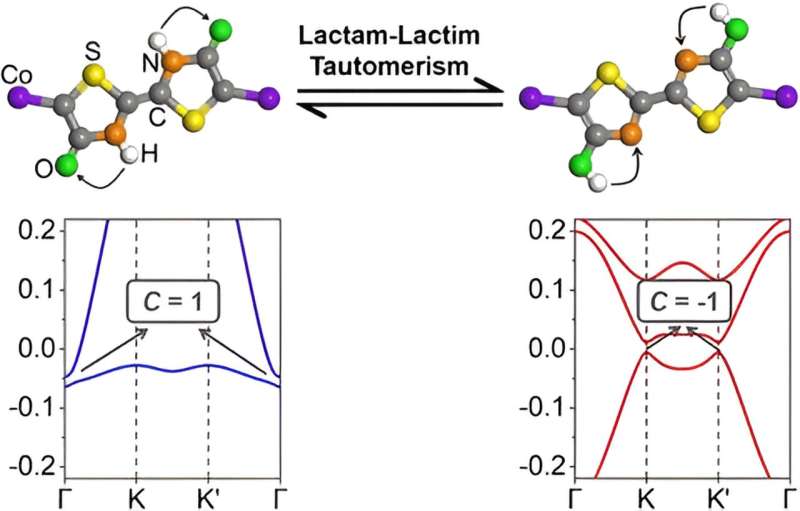This article has been reviewed according to Science X's editorial process and policies. Editors have highlighted the following attributes while ensuring the content's credibility:
fact-checked
peer-reviewed publication
proofread
Advances in topological phase transition in organometallic lattices

A research group led by Prof. Li Xingxing of University of Science and Technology of China (USTC) of Chinese Academy of Chinese (CAS) made a reversible topological control in 2D organometallic lattices achieved through tautomerization. Their work was published in Advanced Functional Materials.
Topological materials have been gaining interest in condensed matter physics due to their topologically protected surface states that allow dissipationless electron transport. However, most of the current topological materials exhibit a single type of band topology, with simultaneous realization of multiple topological properties within the same material urgently needed to boost functionality. At the present, a couple of physical methods have been developed in certain systems, while the chemical methods are significantly restricted and irreversible.
In the previous work of the group, reversible spin order transition was achieved in organometallic lattices through lactam-lactim tautomerization. Based on this result, the group extended the method to organometallic frameworks and introduced tautomerization modules in organic linkers of organic topological insulator (OTI).
The tautomerization then triggered a magnetic phase transition that changed the electronic band structure of the 2D organometallic lattices, which consequently produced a controllable reversible topological phase transition by changing the Chern number.
Researchers employed 2,2′-bithiazole derivatives as the organic linkers planar. Combined with tricoordinated Co atoms, a 2D topological material is designed, with its feasibility theoretically illustrated in simulations. After the tautomerization, this organometallic lattice experienced a change from a ferrimagnetic half metal with a local gap having a Chern number of +1 to a ferromagnetic Chern insulator possessing a Chern number of −1, with the spin polarization direction of the charge carriers in the lattice was also reversed.
This study contributes to the efforts to enable dissipationless electron transport and offers promising applications in spintronics and quantum computations.
More information: Junyao Li et al, Tautomerization Makes Topological Phase Transition in 2D Organometallic Lattices, Advanced Functional Materials (2024). DOI: 10.1002/adfm.202400610
Journal information: Advanced Functional Materials
Provided by University of Science and Technology of China





















